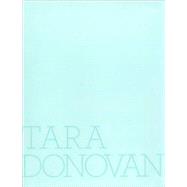
What is included with this book?
Tara Donovan was born in 1969 in New York City. She studied at the School of Visual Arts, New York; Corcoran College of Art and Design, Washington, D.C.; and Virginia Commonwealth University, Richmond. She has received solo exhibitions at the Metropolitan Museum of Art, New York; the Museum of Contemporary Art, San Diego; and numerous museums and galleries. Her work has been included in group exhibitions in New York, Boston, Chicago, Dallas, Los Angeles, and London, among other cities nationally and internationally.
Nicholas Baume is chief curator at the ICA, Boston. He has organized exhibitions on the work of Kai Althoff, Kader Attia, Carol Bove, Thomas Hirschhorn, Lucy McKenzie, and Anish Kapoor.
Jen Mergel is assistant curator at the ICA, Boston.
Lawrence Weschler, a staff writer at the New Yorker for over twenty years, is director of the New York Institute for the Humanities at New York University and artistic director of the Chicago Humanities Festival. His books include Seeing Is Forgetting the Name of the Thing One Sees, Mr. Wilson's Cabinet of Wonder, and the forthcoming True to Life, which encompasses twenty-five years of conversation with David Hockney.
| Second Nature | p. 7 |
| Plates | p. 16 |
| Animal, Mineral, Vegetable: The Material Coming to Life. A conversation between Lawrence Weschler and Tara Donovan | p. 138 |
| Biography | p. 156 |
| Afterword | p. 158 |
| Contributors | p. 159 |
| Photography Credits | p. 160 |
| Table of Contents provided by Blackwell. All Rights Reserved. |
The New copy of this book will include any supplemental materials advertised. Please check the title of the book to determine if it should include any access cards, study guides, lab manuals, CDs, etc.
The Used, Rental and eBook copies of this book are not guaranteed to include any supplemental materials. Typically, only the book itself is included. This is true even if the title states it includes any access cards, study guides, lab manuals, CDs, etc.
Excerpted from Tara Donovan by Tara Donovan
All rights reserved by the original copyright owners. Excerpts are provided for display purposes only and may not be reproduced, reprinted or distributed without the written permission of the publisher.